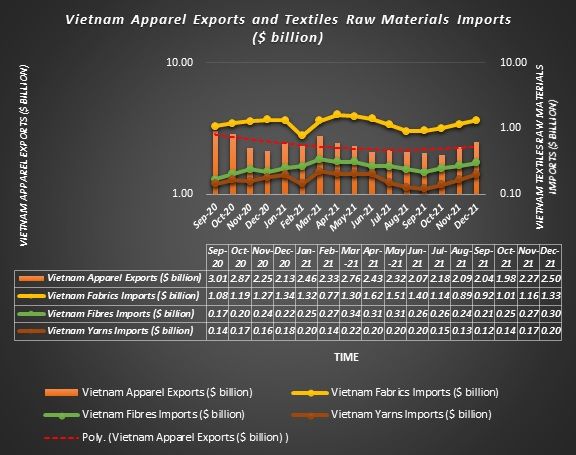
Why Vietnam’s apparel exports, raw material imports will decline?
Vietnamese textile manufacturers may not be able to maintain the previous levels of production in H2 2021 due to social distancing measures in the country and a shortage of labour amid the new wave of the pandemic. Most of the units had suspended production in July 2021, while some other had continued production by allowing workers to stay onsite.
However, the companies were forced to stop production in August as a number of customers cancelled their orders, while some others demanded air shipping as opposed to marine, thus increasing the cost of shipping for the manufacturers. The customers earlier considered shifting garment sourcing to other countries, however, now that the Vietnamese government has allowed them to begin production from September 27, the manufacturers may be able to retain some of their clients.
Nevertheless, the lull in production due to COVID-19 is most likely to cause the country to lose its trade volume, especially reducing apparel exports and raw material imports.
Vietnamese textile manufacturers may not be able to maintain the previous levels of production in H2 2021 due to social distancing measures in the country and a shortage of labour amid the new wave of the pandemic. Most of the units had suspended production in July 2021, while some other had continued production by allowing workers to stay onsite.

The monthly average of apparel exports of Vietnam was $2.42 billion in the last quarter of 2020, which dropped slightly to a monthly average of $2.39 billion in H1 2021, according to TexPro, Fibre2Fashion’s market analysis tool. It will further reduce by 9.11 per cent to a monthly average of $2.18 billion in 00482 2021.
Vietnam’s monthly average of fabric imports went up from $1.27 billion in Q4 2020 to $1.32 billion in H1 2021. It is now expected to drop to a monthly average of $1.07 billion in H2 2021, falling by 18.69 per cent over the monthly average in H1 2021.
The monthly average of fibre imports was $0.22 billion in Q4 2020, which increased by 31.99 per cent to a monthly average of $0.29 billion in H1 2021. Now it is expected to drop by 12.45 per cent to a monthly average of $0.25 billion in H2 2021.
As for the yarn imports, the monthly average increased from $0.17 billion in Q4 2020 to $0.20 billion in H1 2021, but it may decrease to $0.15 billion in H2 2021.
Fibre2Fashion News Desk (KD)





